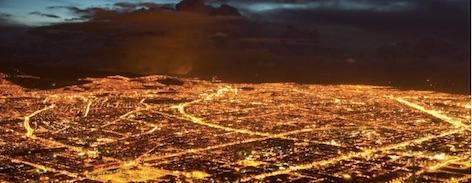
By RP Siegel — There’s an old saying, “be careful what you wish for, you might get it.” True enough, it cautions us to look beyond near-term results. There are those like Adam Vaughn, writing in the Guardian, now saying exactly that about electric cars. Certainly, Vaughn and others are not wrong. Big increases in EV utilisation will tax our current electric supply. In his case, he’s quoting National Grid saying that EV growth in the UK could exceed the capacity of the Hinckley Point C nuclear power station by 2030. The idea that the 3.2GW plant, which is still under construction, could fall short of meeting demand that soon, is certainly a disturbing one.
When the plans for the plant were being drawn up, no one anticipated that the number of electric vehicles could possibly grow from 90,000 today, to nine million in 2030, a one-hundredfold increase. According to National Grid, these vehicles could add as much as 8 GW of additional demand, if they are not charged smartly.
What they mean by charging smartly is the idea that demand and supply can be tightly coordinated. You could get some inkling of this by imaging a conductor leading an orchestra, signaling each instrument when it’s time to come in. The art, if one were to call it that, is known as demand management. Demand management, according to EIA is, “designed to encourage consumers to modify their level and pattern of electricity usage.”
Generally, this is achieved either by technology or with pricing incentives.
The incentives are by far the simplest. Most industrial and commercial ratepayers, have sophisticated power meters that measure both consumption and demand. This allows utilities to charge more for electricity during periods of high demand. This encourages these large customers to minimises their demand during high peak periods. They can use renewables, onsite storage, or other methods like thermal storage to shift things like their cooling loads from noontime till evening. However, demand pricing is generally not used for residential customers.
Many utilities take this a step further with demand response management systems (DRMS). These automatically control portions of the grid, anywhere from a substation to an individual customer site, to briefly postpone service to that location to allow a demand peak to pass, before resuming supply. These are generally applied to what are considered non-critical loads. Some utilities, such as Florida Power & Light, provide a monthly credit to users who agree to have a device installed onsite that allows the utility to take control of connected loads for brief periods as a means of managing demand in this way.
Renewables and electric vehicles each bring a different element to this question. Renewables, of course, are prone to inconsistency, though the problem can be diminished by drawing power from geographically diverse sources. Electric cars, add another twist due to the fact that collectively, nine million cars represent an enormous amount of energy storage. Vehicle to grid or V2G architectures take advantage of this capacity by utilising those vehicles connected to the grid to adapt to momentary dips and surges in supply. Sophisticated apps will track all this activity to ensure that car owners are properly credited for their electricity and the use of their battery, as well as making sure that there is plenty of juice left to reach the next destination. All of this comes under the umbrella of the smart grid.
In summary, while these concerns are certainly real, there are numerous opportunities and available tools to apply creative thinking to address this competently without the need to go running back to the coal mines.
TriplePundit has published articles from over 1000 contributors. If you'd like to be a guest author, please get in touch!














